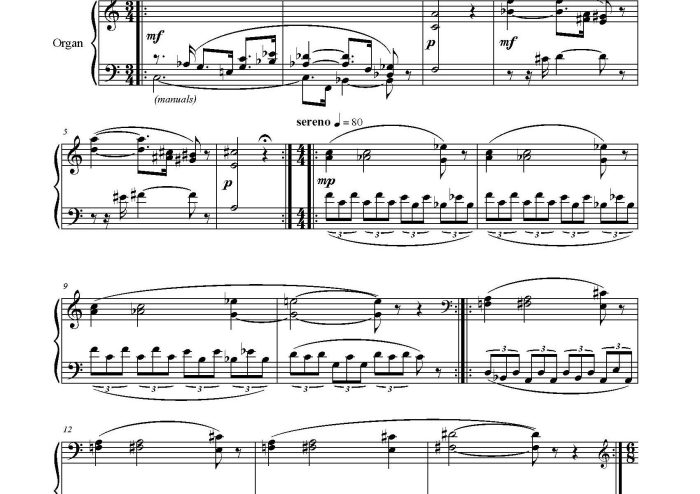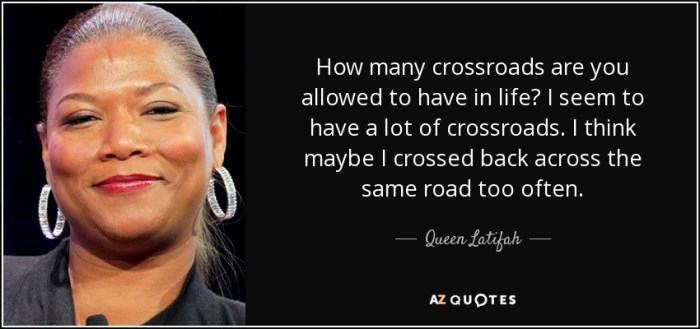Crossroads a sad vaudeville pdf – Crossroads: A Sad Vaudeville (PDF) invites you on a captivating journey through a poignant and thought-provoking play that explores the complexities of human existence. Delve into its historical context, unravel its intricate plot, and discover the profound themes that resonate deeply with the human experience.
Through its unique blend of vaudeville elements and introspective storytelling, Crossroads: A Sad Vaudeville (PDF) offers a compelling examination of loss, identity, and the relentless search for meaning. Prepare to be immersed in a world of vivid characters, intricate relationships, and enduring symbolism that will leave a lasting impression.
Overview of Crossroads: A Sad Vaudeville

Crossroads: A Sad Vaudeville is a one-act play written by Eugene O’Neill in 1924. It is set in a cheap vaudeville theater in New York City in the 1920s. The play follows the lives of a group of vaudeville performers as they struggle to make ends meet and find meaning in their lives.
Crossroads is a powerful and moving play that explores the themes of loneliness, despair, and the search for redemption. It is considered one of O’Neill’s most important works and has been praised for its realism and its insights into the human condition.
Historical Context and Significance
Crossroads was written during a time of great social and economic change in the United States. The play reflects the disillusionment and despair that many Americans felt in the aftermath of World War I. The play also explores the changing nature of American entertainment, as vaudeville was beginning to decline in popularity.
Plot Summary
Crossroads tells the story of a group of vaudeville performers who are struggling to make ends meet. The group includes a comedian (Ned), a dancer (Ellie), a singer (Jack), and a magician (Harry). The performers are all down on their luck and are looking for a way to break out of their rut.
One day, the performers are offered a chance to perform in a new show. The show is a success, and the performers are finally able to achieve some measure of success. However, their success is short-lived, and the performers soon find themselves back in their old rut.
Main Themes
Crossroads explores a number of themes, including loneliness, despair, and the search for redemption. The play shows how the performers are all isolated and alone, and how they are struggling to find meaning in their lives. The play also shows how the performers are all searching for redemption, and how they are trying to find a way to make their lives better.
Critical Reception and Impact on Theater
Crossroads was a critical success when it was first produced in 1924. The play was praised for its realism and its insights into the human condition. Crossroads has since been produced countless times around the world and has had a major impact on theater.
The play is considered one of O’Neill’s most important works and is still studied and performed today.
Characters and Relationships

Crossroads: A Sad Vaudeville features a diverse cast of characters who navigate the complexities of human relationships and the struggles of the human condition. Each character is intricately developed, with their own motivations, conflicts, and unique journeys.
At the heart of the play is Max, a former vaudeville performer who has lost his passion for life. Haunted by the ghosts of his past, Max struggles to find meaning in his present existence. His relationship with his estranged daughter, Vera, is strained and filled with unresolved conflicts.
Vera and Max’s Relationship, Crossroads a sad vaudeville pdf
Vera, a young woman who dreams of a better life, resents her father for his absence during her childhood. Her anger and bitterness towards Max stem from his inability to provide a stable and loving home. As the play progresses, Vera grapples with her conflicting emotions towards her father, torn between her desire for reconciliation and her resentment of his past actions.
Symbolism and Allegory
The characters in Crossroads: A Sad Vaudeville are often portrayed using symbolism and allegory. Max, for example, represents the fading glory of vaudeville and the nostalgia for a bygone era. Vera, on the other hand, symbolizes hope and the possibility of redemption.
Through these characters, the play explores themes of loss, regret, and the search for meaning in life.
Themes and Motifs

Crossroads: A Sad Vaudeville explores profound themes that resonate with the human experience. The play delves into the complexities of loss, identity, and the elusive search for meaning in life.
The theme of loss permeates the play, as characters grapple with the absence of loved ones and the pain of unfulfilled dreams. The play’s poignant depiction of grief and longing underscores the fragility of human existence and the transformative power of loss.
Identity and Self-Discovery
Crossroads also examines the theme of identity and self-discovery. The characters embark on journeys of self-exploration, questioning their place in the world and seeking a deeper understanding of who they are. Through their struggles and revelations, the play explores the complexities of self-identity and the transformative power of adversity.
The Search for Meaning
A central theme of Crossroads is the search for meaning in life. The characters yearn for purpose and fulfillment, but their paths are often fraught with obstacles and uncertainty. The play explores the human need for connection, belonging, and a sense of purpose, ultimately questioning the nature of existence and the possibility of finding true meaning.
Recurring Motifs and Symbols
Crossroads employs recurring motifs and symbols to reinforce its themes. The crossroads itself serves as a potent symbol of choice and the intersection of multiple paths. Mirrors reflect the characters’ inner struggles and the fragmentation of their identities. The image of a train evokes a sense of longing and the passage of time, while the music and dance sequences underscore the play’s vaudevillian roots and the bittersweet nature of life’s journey.
Style and Structure

Crossroads: A Sad Vaudeville employs a unique blend of vaudeville elements, theatrical conventions, and poetic language to create a poignant and thought-provoking work. Its episodic structure, characterized by a series of interconnected scenes, mirrors the fragmented nature of the characters’ lives and the cyclical patterns of human existence.
Use of Vaudeville Elements
Vaudeville, a popular form of entertainment in the early 20th century, featured a variety of acts, including comedy sketches, musical numbers, and acrobatic performances. Crossroads incorporates vaudeville elements, such as a chorus of singers and dancers, to create a sense of theatricality and to highlight the performative aspects of human behavior.
The play’s characters often engage in exaggerated gestures and exaggerated dialogue, which underscores their emotional turmoil and the artifice of their relationships. The use of music and dance further enhances the play’s emotional impact, creating moments of both joy and sorrow.
Episodic Structure and Cyclical Patterns
Crossroads is structured as a series of loosely connected episodes, each of which focuses on a different character or set of characters. This episodic structure allows the play to explore multiple perspectives and experiences, while also highlighting the interconnectedness of the characters’ lives.
The play’s cyclical patterns reinforce the idea that life is a series of repetitions and returns. Characters find themselves caught in cycles of addiction, poverty, and heartbreak, and the play suggests that it is difficult to escape these patterns.
Crossroads: A Sad Vaudeville PDF may delve into the complexities of human emotion and resilience. If you seek solace and rejuvenation after this introspective journey, consider visiting a wellness center or spa . These havens offer a sanctuary where you can revitalize your mind and body, restoring your well-being.
Afterward, return to Crossroads: A Sad Vaudeville PDF with a renewed perspective, ready to appreciate its poignant insights.
Comparison to Other Works
Crossroads: A Sad Vaudeville shares similarities with other works of the same period, such as Eugene O’Neill’s The Iceman Cometh and Bertolt Brecht’s The Threepenny Opera. These works also employ episodic structures and explore themes of alienation, poverty, and the human condition.
However, Crossroads distinguishes itself through its use of vaudeville elements and its focus on the performative aspects of human behavior. The play’s unique style and structure contribute to its powerful emotional impact and its exploration of the complexities of human nature.
Adaptations and Legacy
Crossroads: A Sad Vaudeville has been adapted into various mediums, including film, television, and stage productions, which have significantly influenced its legacy and interpretation.
Film Adaptations
The play’s first film adaptation, released in 1930, starred Helen Morgan and was directed by William A. Seiter. This adaptation focused on the vaudeville setting and the characters’ relationships, but it deviated from the play’s tragic ending.
Television Adaptations
In 1956, the play was adapted into a television episode of the anthology series Producers’ Showcase, starring Judy Garland. This adaptation preserved the play’s original setting and themes, earning critical acclaim and contributing to Garland’s resurgence in popularity.
Stage Productions
Crossroads: A Sad Vaudeville has continued to be staged throughout the years, with notable productions including a 1978 revival starring Rosemary Harris and a 2004 production at the Donmar Warehouse in London.
These adaptations have ensured the play’s continued relevance and impact on contemporary theater. They have introduced new generations to its poignant themes and characters, and have contributed to its enduring legacy as a classic American drama.
FAQ Summary: Crossroads A Sad Vaudeville Pdf
Where can I find the full text of Crossroads: A Sad Vaudeville?
The PDF version of Crossroads: A Sad Vaudeville can be found online through various academic databases and reputable websites.
What are the main themes explored in Crossroads: A Sad Vaudeville?
The play delves into themes of loss, identity, the search for meaning, and the human condition.
How does the play utilize vaudeville elements?
Crossroads: A Sad Vaudeville incorporates vaudeville elements such as music, dance, and comedy to create a unique and engaging theatrical experience.